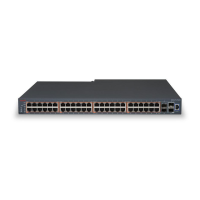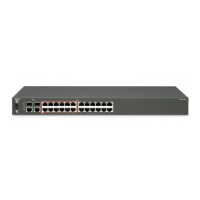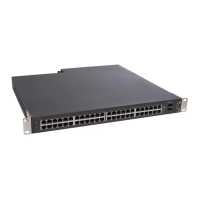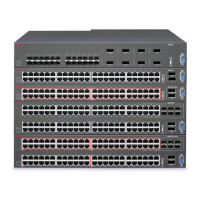IEEE 802.1x (Port Based Network Access Control)
Issue 2 July 2005 127
IEEE 802.1x Implementation in the C360
This section lists the conditions that govern the implementation of the 802.1x standard in the
C360 line:
● You can configure 802.1x on the 10/100 Mbps Ethernet ports only.
● 802.1x can work only if a RADIUS server is configured on the C360 and the RADIUS
server is carefully configured to support 802.1x.
● 802.1x and port/intermodule redundancy can co-exist on the same ports.
● 802.1x and LAGs can coexist on the same ports.
● 802.1x and Spanning Tree can be simultaneously active on a module.
Note:
Note: If either 802.1x or STP/RSTP are in a blocking state, the final state of the port will
be blocked.
● When 802.1x is activated, the application immediately places all ports in a blocking state
unless they were declared "Force Authenticate". They will be reverted to "Forwarding"
state only when the port is authorized by the RADIUS server.
Note:
Note: The actual state of ports configured as "Force Authenticate" is determined by the
STA.
Configuring the C360 for 802.1x
This section lists the basic tasks required to configure a C360 stack for 802.1x. To configure
C360 for 802.1x, do the following:
● Configure a RADIUS server on a network reachable from the C360:
- Create user names and passwords for allowed users.
- Make sure the EAP option is enabled on this server.
● Configure the C360 for RADIUS:
- Configure RADIUS parameters.
- Enable the RADIUS feature.
- Configure the port used to access the RADIUS server as "force-authorized."
Tip:
Tip: You can configure on the RADIUS server a PVID, static VLAN binding and port
level for each authenticated user. If the port that the user is connected to is
authorized, those parameters will be assigned to the port.

